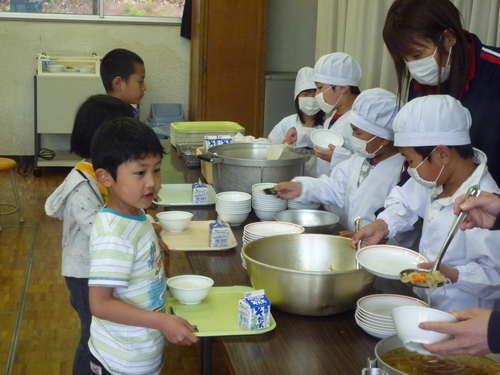I've just found out about Japanese school lunches, and I wanted to share.
Basically, every student at school has a school lunch, it's not optional. They eat in their classroom and serve each other, instead of having a cafeteria and dinner ladies. They even get a menu with the ingredients on it. The meals are all nutritionally-balanced and they look delicious. I'll put some photos down below.
I saw a video of it, and they even do this at elementary school. It looks so organised and friendly. I wonder if they always get on in the groups that they have to sit in? Or what they do with food they don't like. As usual I have loads of questions!
Oh yeah, and can anyone tell me what some of the food is? I mean, I can recognise an egg, and noodles and rice, but is that milk in the carton? What is the packet of stuff in the middle photo?



Basically, every student at school has a school lunch, it's not optional. They eat in their classroom and serve each other, instead of having a cafeteria and dinner ladies. They even get a menu with the ingredients on it. The meals are all nutritionally-balanced and they look delicious. I'll put some photos down below.
I saw a video of it, and they even do this at elementary school. It looks so organised and friendly. I wonder if they always get on in the groups that they have to sit in? Or what they do with food they don't like. As usual I have loads of questions!
Oh yeah, and can anyone tell me what some of the food is? I mean, I can recognise an egg, and noodles and rice, but is that milk in the carton? What is the packet of stuff in the middle photo?

Comment